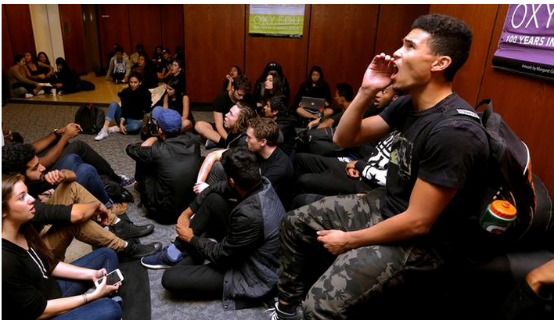
In the 1960s, a casual but still effective saying summarized the rebelliousness(叛逆性) of youth: “Don't trust anyone over 30.” As it turns out, that warning is a much more suitable bumper sticker (保险杠大头贴) for today's student activists than it was 50 years ago. Young people now — the post-millennials (千禧年之后) — face a far deeper generational divide than the one that separated baby boomers from their parents. And the nation faces a far more serious crisis if that divide cannot be bridged.
The wave of mostly white, mostly middle-class boomers that flooded college campuses in the 1960s got swept up in a variety of causes — Vietnam, civil rights, feminism. They questioned authority in ways their Depression- and World War II-era parents never did. Yet it could be argued that most of them had little reason in general to object to the status quo (现状). They had benefited from post-World War II prosperity and government programs, such as the GI Bill, that allowed their parents to raise them in comfortable suburban homes and send them to free, decent public schools. Later, Great Society initiatives such as the Higher Education Act of 1965 enabled them to attend college in historic numbers at a reasonable cost, and there were jobs immediately after graduation.
Back then, public investments in America's families and youth were embraced by older generations who wanted their children and grandchildren to achieve the American dream. The situation — and the demography(人口统计学) — is much different today.
The younger population of the U.S. is now highly diverse. Racial minorities, who are not always from the middle class, represent roughly half of the students in the nation's K-12 public schools. That level of diversity is destined to increase: Since the 2010 census, in 46 out of 50 states and in nearly 9 out of 10 of the country's 3,100 counties, more white youths have turned 20 than were born or in-migrated. By 2023, whites will comprise less than half of the U.S. population under age 30. More importantly, the entire white working-age population will decline by 12 million over the next 15 years because of aging and retirement; that means young Latinos, blacks, Asians and other minorities must take their place.
本时文内容由奇速英语国际教育研究院原创编写,禁止复制和任何商业用途,版权所有,侵权必究!

